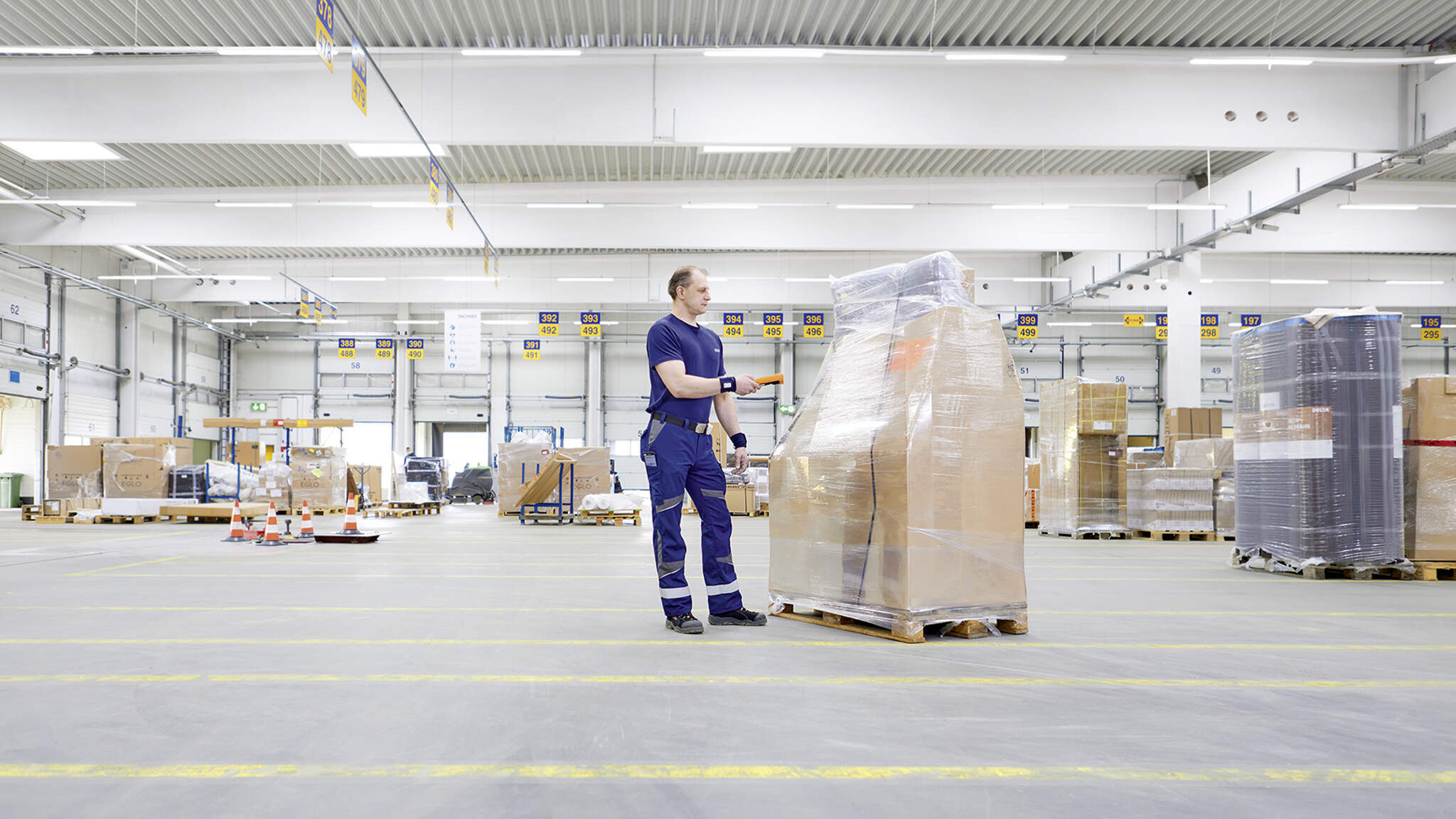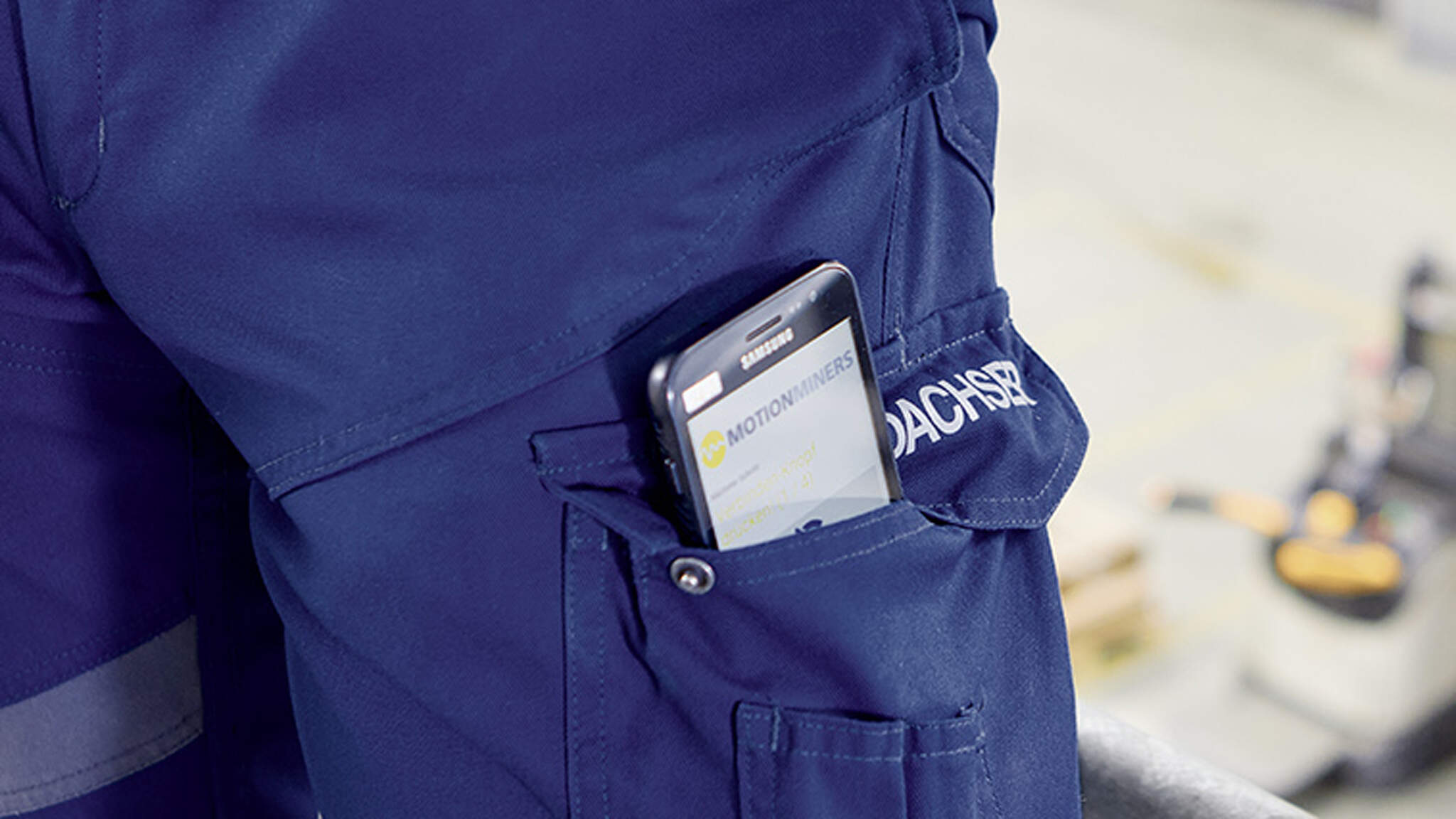Data for improved process quality and ergonomics
DACHSER has joined forces with start-up MotionMiners to gain a better understanding of the work steps in the transit terminal. At five locations, the partners tested a new method for improving process quality—which should then also have a positive impact on work ergonomics.

Around the clock, thousands of logistics operatives in the DACHSER network are busy ensuring that customers’ supply chains function reliably. The majority of these employees work in the transit terminals, the very heart of logistics. Most cargo handling work is done manually: trucks are unloaded, goods are scanned, pallets are brought into the terminal for temporary storage or to be loaded straight onto another truck. It’s a constant, pulsating flow.
The work incorporates proven, well-oiled processes. Nevertheless, there is always potential to improve and simplify things for employees when it comes to work ergonomics. Doing so normally requires a process analysis based on measurement results. Unfortunately, many such analyses aren’t truly objective. The traditional analysis methods that are usually used exhibit a variety of weaknesses.
Likewise, having another person watch you at work isn’t everyone’s cup of tea, but some conventional analytical methods use this as a tool. Then, consciously or not, employees try to ensure that they do everything right and as quickly as possible. Although this approach gets results and thus provides some important clues as to how a process works and what can be improved, it means the data collection is not only subjective, it also takes a lot of time.
That’s why DACHSER went in search of new solutions for optimizing the efficiency and ergonomics, and thus the (work) quality, in cargo handling. They found these solutions at a young company from Dortmund: in October 2017, three employees from the Fraunhofer Institute for Material Flow and Logistics IML joined forces and founded the company MotionMiners. The start-up has been working independently of the Fraunhofer Institute since summer 2019.
Driving development projects forward
In its search for innovative solutions, DACHSER has long been extensively involved with logistics start-ups. The Dachser Enterprise Lab maintains a close partnership with Fraunhofer IML in Dortmund to find research and development projects that will drive the DACHSER network forward. These projects particularly involve anything related to digital technologies, such as data science and artificial intelligence, real-time positioning and the 5G mobile communications standard, machine connectivity (Internet of Things), autonomous vehicles, and adaptive warehouse systems.
That’s how DACHSER also came to learn of MotionMiners. This young company initially focused on finding warehouse optimization potential. In collaboration with DACHSER, its development then expanded to include cargo handling for freight forwarding.
MotionMiners provides a technology that facilitates the collection of real-world data from workflows and work environments without collecting employee data. In practice, it goes like this: Over the past few months, measurements were carried out at five DACHSER branches in Germany using mobile sensors, known as wearables, that collect anonymized data. Employees wore the sensors either on their wrist or attached to an item of clothing. These movement trackers are normally used primarily for sports activities, but the founders of MotionMiners take advantage of their automatic activity detection to optimize intralogistics.
In conjunction with stationary sensors mounted in the terminal or on shelves, they record the actual routines. This enabled the company to collect cargo handling data, such as loading and unloading, scanning, and bringing the pallets into the terminal. In addition to the times for these processes, the sensors also detect unhealthy and strenuous movements.
Before the data collection began, the project was coordinated in detail with the IT committee of the general works council. Participation was voluntary for employees, and the anonymized data collected was subsequently evaluated. These conditions let employees work as they naturally would. “It was no problem to convince staff to participate,” says Steffen Faul, Operations Manager Transit Terminal in Langenau, one of the measurement locations. People didn’t find the sensor systems bothersome. “The advantage here is that we can objectively record daily operations in their entirety, along with all unforeseeable events,” explains Mauritius Herden, Team Leader Production Processes at DACHSER Food Logistics, who is responsible for the project.
“The data obtained from this gives us a whole new level of transparency that we hadn’t previously expected,” adds Cornelius John, Team Leader Production Optimization at the DACHSER Head Office in Kempten.
Another interesting aspect involves heatmaps. On a floor plan of the terminal area, they show which paths employees traverse particularly often and where they encounter bottlenecks and long waits. These can then be analyzed on-site and, ideally, remedied.

Reducing physical strain
“The most interesting outcome is what we’ve learned about ergonomics,” Herden says. The trackers document how often employees have to bend down while working, for instance to scan labels at the lower edge of a pallet or to pick something up. In another case, it was found that unloading involved many movements using raised arms. “Ultimately, the measurements provide us with our first truly solid base of information for assessing the physical strain on employees,” Herden says.
By late December 2020, 1,800 data hours had been collected at the five locations. Summing up, John says: “Our initial aim for the project was to create transparency around which process times we were even talking about.” On this basis, it was now possible to develop specific recommendations and measures to approach cargo handling more strategically and efficiently and to better support logistics operatives in their day-to-day work. For Faul, who heads up cargo handling in Langenau, this is a clear advantage. “We were able to measure the actual strain on employees, enabling us, in the best-case scenario, to prevent absences due to illness, or even occupational diseases.”
Whereas recommendations for the branch were previously based more on gut feelings or spot checks, there is now solid, objective data. “In the future, we’ll be able to draw up recommended courses of action and offer best-case structures,” John says.
The pilot project ran for a good year and is now being continued at additional locations. Going forward, the aim is to collect data at a number of branches in Germany and elsewhere, and to expand data collection to other warehouse processes and activities. “We plan to gradually build up the measurements in the DACHSER network in the years ahead,” John says. Faul also hopes to see the measurements repeated at the locations where they’ve already been carried out. “Tasks change over time. That’s why I’m definitely in favor of carrying the measurements out again, also here in cargo handling in Langenau.”
After all, the idea is for customers to also gain something from the data obtained. “They benefit from the increased transparency in cargo handling,” John adds, “as it gives us starting points for optimizing production processes, which ultimately enables us to deliver even better quality.”